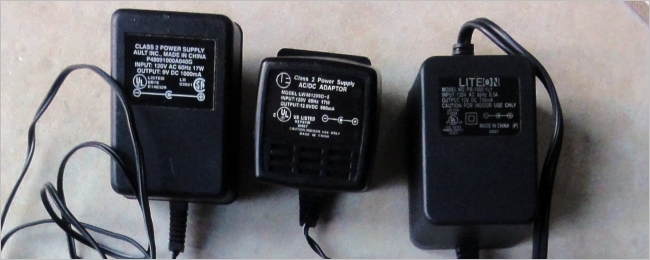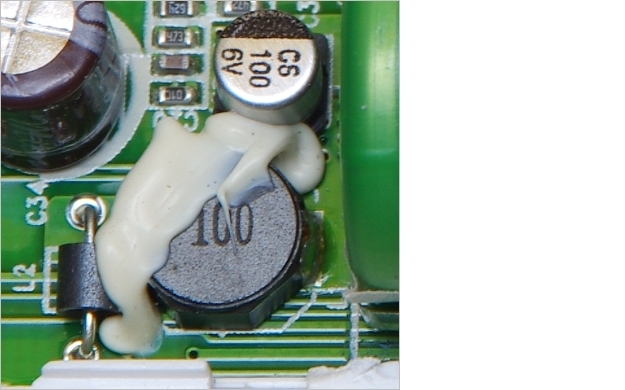
筆記本電源適配器為什么總壞

Most of the time our AC adapters and power supplies tend to be quiet, but what does it mean when one makes a whining noise? Should you be concerned? Today’s SuperUser Q&A post has the answers to a worried reader’s questions.
大多數時候,我們的AC適配器和電源往往比較安靜,但是當發出嘶啞的聲音時,這意味著什么呢? 你應該擔心嗎? 今天的“超級用戶問答”帖子為讀者提供了一個令人擔憂的問題的答案。
Today’s Question & Answer session comes to us courtesy of SuperUser—a subdivision of Stack Exchange, a community-driven grouping of Q&A web sites.
今天的“問答”環節由SuperUser提供,它是Stack Exchange的一個分支,該社區是由社區驅動的Q&A網站分組。
Photo courtesy of Bart Everson (Flickr).
圖片由Bart Everson(Flickr)提供。
問題 (The Question)
SuperUser reader Rishat Muhametshin wants to know why some of his AC adapters and power supplies make a whining noise:
超級用戶讀者Rishat Muhametshin想知道為什么他的某些AC適配器和電源會發出嘶嘶聲:
I have many different AC adapters and power supplies for a variety of devices, ranging from small 5V/1A USB chargers to laptop power adapters and desktop PSUs. However, I often hear a whining noise from some of these power supplies. This happens most often when they are not connected to a device or otherwise in use, and stop making noise when I connect a device that is not fully charged.
我有許多用于各種設備的AC適配器和電源,從小型5V / 1A USB充電器到筆記本電腦電源適配器和臺式機PSU。 但是,我經常聽到其中一些電源發出刺耳的聲音。 當它們未連接到設備或以其他方式使用時,這種情況最常發生,而當我連接未完全充電的設備時,則停止發出噪音。
Why do some AC adapters and power supplies make this whining noise? Why do some not make this noise? Is there anything that I can do to suppress it?
為什么有些交流適配器和電源會發出這種嘯叫聲? 為什么有些人不發出這種聲音? 有什么我可以抑制的事情嗎?
Why do some AC adapters and power supplies make a whining noise?
為什么有些交流適配器和電源會發出嗡嗡聲?
答案 (The Answer)
SuperUser contributors DragonLord and Daniel R Hicks have the answer for us. First up, DragonLord:
超級用戶貢獻者DragonLord和Daniel R Hicks為我們提供了答案。 首先,DragonLord:
Most power conversion devices contains coils, such as transformers or inductors. These components use electromagnetism to convert AC main power to low-voltage DC power. The varying magnetic fields generated by these components can cause them to physically vibrate at high frequency, resulting in a high-pitched noise.
大多數電源轉換設備都包含線圈,例如變壓器或電感器。 這些組件使用電磁將交流主電源轉換為低壓直流電源。 這些組件產生的變化的磁場會導致它們在高頻下發生物理振動,從而產生高音調的噪聲。
Most modern AC adapters are switched-mode power supplies. The internal switching frequency of an SMPS is typically low when unloaded and increases with a load (up to a certain point depending on the design). The no-load frequency is often low enough to be within the human hearing range.
大多數現代交流適配器都是開關電源。 卸載時,SMPS的內部開關頻率通常較低,并隨負載而增加(取決于設計,直至特定點)。 空載頻率通常足夠低以至于在人類的聽力范圍內。
In addition, in low or no-load situations the PWM (Pulse Width Modulation) used to regulate voltage at the inverter stage will be at a low duty cycle and create a “spikey” output profile which is more prone to causing vibration in coils, and the transformer itself will tend to vibrate as well. Together, these can lead to audible noise especially in cheaper units which fail to suppress this noise.
此外,在低負載或空載情況下,用于調節逆變器級電壓的PWM(脈沖寬度調制)將處于低占空比,并產生“尖峰”輸出曲線,該曲線更容易引起線圈振動,變壓器本身也容易振動。 這些因素加在一起會導致可聽見的噪聲,尤其是在無法抑制這種噪聲的廉價設備中。
Under a load, a properly functioning SMPS should operate at a frequency well above the human hearing range, typically 50 KHz or higher (although some older designs operate at 33 kHz). However, the same noise can occur under a load with a poorly designed or defective power supply as the coils may vibrate under electrical stress at a sub-harmonic frequency.
在負載下,功能正常的SMPS應在高于人類聽力范圍的頻率(通常為50 KHz或更高)下運行(盡管某些較舊的設計以33 kHz的頻率運行)。 但是,在設計不良或電源故障的負載下也會產生相同的噪聲,因為線圈可能會在電應力作用下以次諧波頻率振動。
This is why you sometimes see a “glue” of sorts on coils inside electronic devices. The glue helps reduce the vibration and noise the coils generate during normal operation. Of course, this means that a user can apply glue onto coils using a glue gun to suppress coil whine—and yes, people have done this successfully with PC motherboards, graphics cards, and power supplies. However, you generally cannot do this easily on small wall chargers of the sort you mentioned without risking damage to the charger or exposure to potentially dangerous voltages.
這就是為什么您有時會在電子設備內部的線圈上看到各種“膠水”的原因。 膠水有助于減少線圈在正常運行期間產生的振動和噪聲。 當然,這意味著用戶可以使用膠槍將膠水涂在線圈上,以抑制線圈發出的嗡嗡聲。是的,人們已經使用PC主板,圖形卡和電源成功完成了此操作。 但是,您通常無法在提到的那種小型壁式充電器上輕松進行此操作,而又不會冒損壞充電器或暴露于潛在危險電壓的危險。
In conclusion, a whining noise is not necessarily a sign of trouble in cheaper wall chargers when they are unloaded. However, a computer PSU or laptop charger that generates coil noise, especially when under a load, may be defective and you may want to consider replacing it.
總之,在便宜的壁式充電器卸下時,發出嘶嘶聲并不一定是麻煩的跡象。 但是,計算機PSU或筆記本電腦充電器會產生線圈噪聲,尤其是在負載下時,可能是有缺陷的,您可能需要考慮更換它。
More information on coil noise can be found in this Wikipedia article.
有關線圈噪聲的更多信息,請參見此Wikipedia文章。
Followed by the answer from Daniel R Hicks:
隨后是Daniel R Hicks的回答:
A coil of copper wire without any “core” metal plates can be made to whine. As the magnetic field increases and decreases (generally about a thousand times a second), the force of the field causes the dimensions of the coil to change slightly, and this vibration leads to a whining sound. Even the wires on a printed circuit board can whine (slightly) under the right circumstances.
可以制造沒有任何“芯”金屬板的銅線線圈。 隨著磁場的增加和減少(通常每秒大約一千次),磁場的力使線圈的尺寸略有變化,并且這種振動會導致發出嘶嘶聲。 在正確的情況下,甚至印刷電路板上的電線也可能(輕微)發牢騷。
Have something to add to the explanation? Sound off in the comments. Want to read more answers from other tech-savvy Stack Exchange users? Check out the full discussion thread here.
有什么補充說明嗎? 在評論中聽起來不錯。 是否想從其他精通Stack Exchange的用戶那里獲得更多答案? 在此處查看完整的討論線程。
翻譯自: https://www.howtogeek.com/200466/why-do-some-ac-adapters-and-power-supplies-make-a-whining-noise/
筆記本電源適配器為什么總壞



)

 - UART寄存器)




)
)



)




